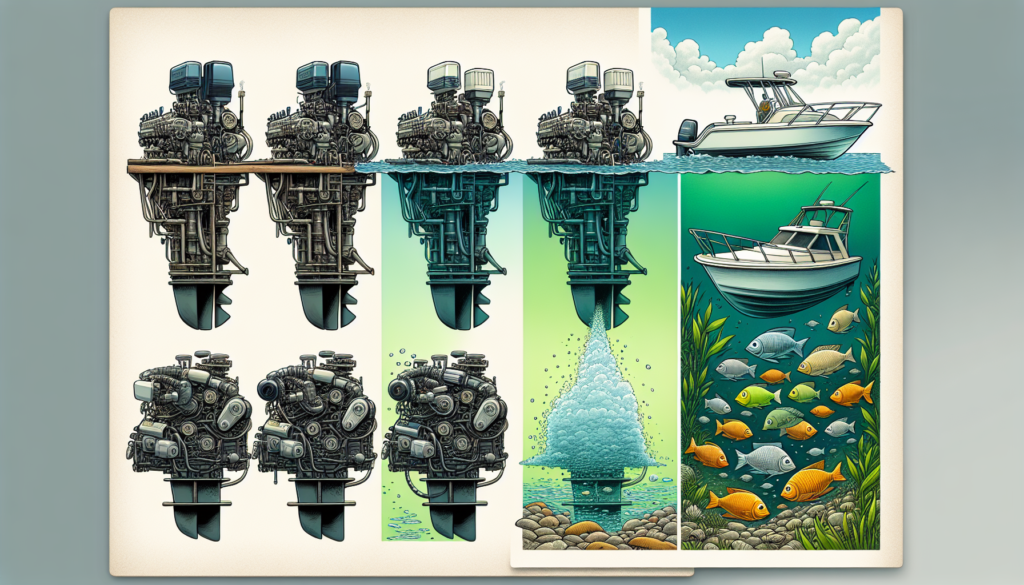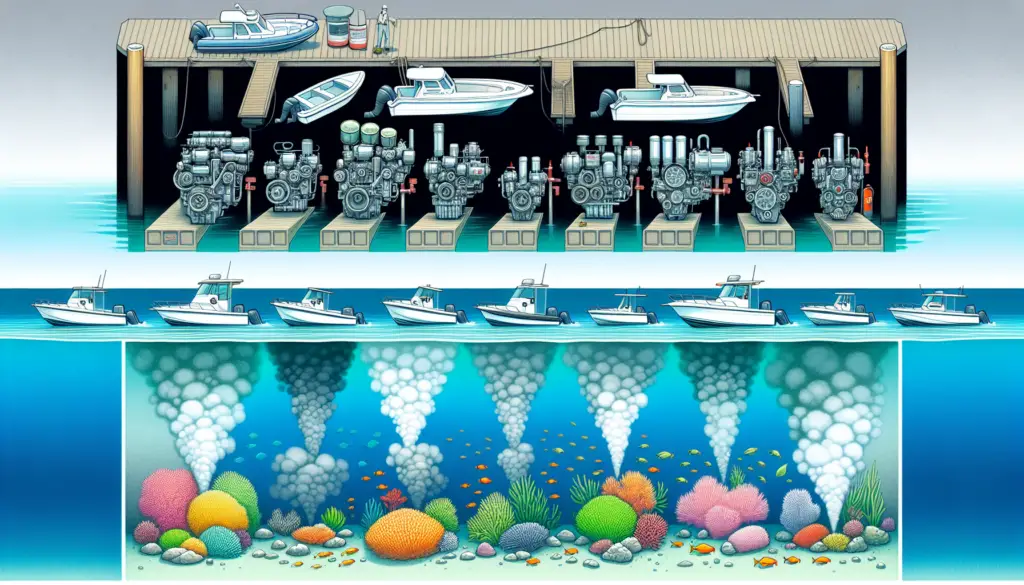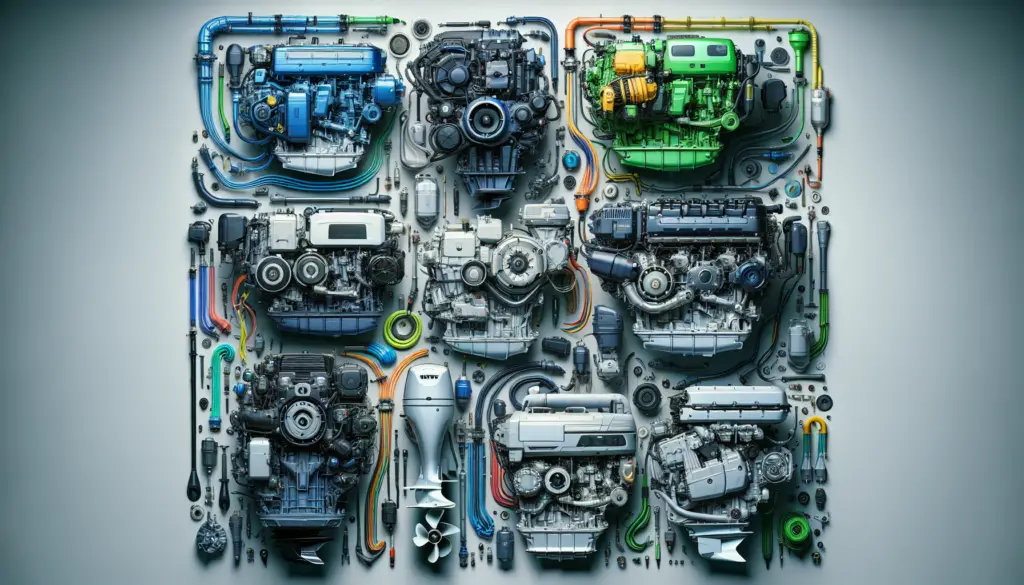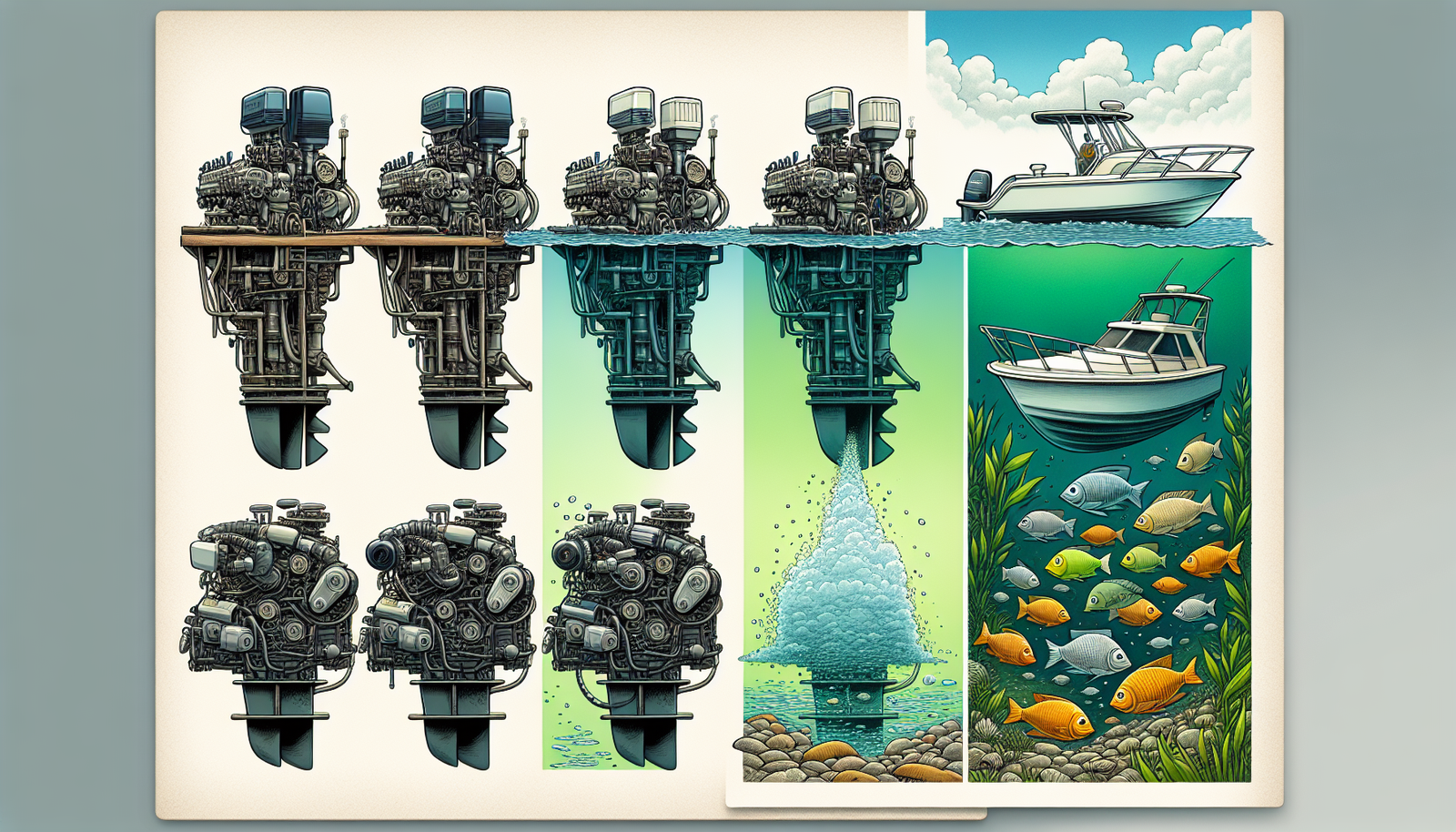Imagine yourself sailing on a calm morning, the gentle hum of your boat’s engine breaking the peace of the water around you. But that soothing hum hides something more significant; each engine leaving its unique imprint on the environment. “The Environmental Impact Of Different Boat Engine Types” is a thorough exploration of how different boat engines contribute to environmental degradation. This informative endeavor is for those who are not just passionate about voyages on the deep blue water, but also care about preserving its pristine essence for generations to come. This article meticulously breaks down the environmental footprints of assorted boat engines, explaining it in terms you can easily understand and appreciate. Strap in, inquisitive mariner, for an enlightening journey.
Overview of Common Boat Engine Types
Understanding the environmental impact of different boat engine types begins with an introduction to four dominant types used in modern boating: outboard motors, inboard motors, stern drive engines, and jet engines. Additionally, we’ll look at steam engines, although less prevalent, still have an impactful presence in the marine world.
Outboard Motors
Outboard motors, often referred to as the “workhorse” of the boating world, are efficient and versatile engines mounted on the outside of the boat. These engines are common due to their easy manual tilt, which comes in handy during shallow water navigation or when the boat is out of the water. However, being exposed to water and the environment can lead to more maintenance and their relatively simple design can contribute to fuel inefficiencies and a significant amount of noise pollution.
Inboard Motors
In contrast, inboard motors are built into the boat’s hull, providing a more stable center of gravity and better handling at high speeds. They prove to be quieter and longer-lasting than their outboard counterparts, however, they fall short when it comes to fuel efficiency and emit more greenhouse gases.
Stern Drive Engines
Also known as I/O engines (Inboard/Outboard), stern drive engines feature an inboard engine with an outboard drive. The design allows for greater speed and improved handling, similar to inboard motors, but it’s fuel efficiency and emission ratings that leave a lot to be desired.
Jet Engines
Jet engines are a more modern innovation in boat propulsion, offering quick acceleration and precise maneuverability. Instead of a propeller, they suck in water and expel it in a high-speed stream, propelling the boat forward. However, their noise levels and fuel consumption are considerable environmental downsides.
Steam Engines
Steam engines, once the primary power source for nautical travel, have mostly faded into historical obscurity, with few still in active use today. While they provide a glimpse into boating’s past, they are the least efficient and most polluting of the boat engines, releasing substantial amounts of emissions.
Fuel Consumption by Engine Type
Understanding the fuel consumption of these engines provides insight into their overall environmental impact.
Comparing fuel efficiency in different boat engine types
There’s a notable difference in fuel efficiency among the different engine types. Inboard motors and stern drive engines, despite their benefits in speed and handling, tend to be the most fuel-hungry. Outboard motors, particularly modern models, can be far more fuel-efficient, while jet engines burn through fuel at a considerable rate due to their high-speed performance.
How fuel consumption contributes to environmental impact
Fuel consumption plays a significant role in environmental impacts. High consumption not only depletes fossil fuel reserves faster but also the combustion of these fuels contributes to air pollution and produces copious amounts of greenhouse gases that exacerbate global warming.

Emissions from Different Engine Types
Understanding the different emissions from these engines is key in determining their impact on air quality.
Greenhouse gases emission from various engine types
Boat engines emit significant amounts of greenhouse gases, including carbon dioxide and methane, both potent contributors to climate change. Inboard engines, stern drive engines, and steam engines are the worst offenders, while outboard motors, particularly newer models, and jet engines produce less, although the figures are still substantial.
Impact of emissions on air quality
These emissions also negatively impact air quality. Nitrogen oxides, sulfur dioxide, and fine particulate matter released during the combustion process are harmful pollutants, leading to health issues in humans and affecting wildlife.
Noise Pollution by Engine Type
Boat engines also contribute to noise pollution, a growing environmental concern.
Comparing noise levels of different boat engines
In terms of noise pollution, outboard motors can be quite loud, particularly older models. Inboard motors and stern drive engines, thanks to their positioning within the boat’s hull, are significantly quieter, whereas jet engines produce a reasonable amount of noise due to their high-speed operation.
How noise pollution affects aquatic life
Noise pollution has a damaging impact on aquatic life. The underwater noise can interfere with marine life’s communication and navigation, disturb feeding and mating patterns, and, in severe cases, cause physical harm to sensitive species.

Impacts on Aquatic Life
Boat engines affect aquatic life in more ways than one; vibration, waste, and heat all play parts.
Effects of engine vibration on aquatic life
From a locomotion perspective, the persistent vibration from boat engines can disrupt the behavior of aquatic life, leading to stress and changes in breeding and feeding patterns.
Engine waste and its impact on water quality
As with any engine, boat engines produce waste, including spilled fuel, oil, and other pollutants. These contaminants not just harm marine life directly, but also deteriorate the water quality making it unhealthy and harmful for the ecosystem.
The influence of engine heat on the marine ecosystem
Boat engines, in some cases, discharge engine heat into surrounding water, which can cause a rise in water temperature. This thermal pollution can shock sensitive marine species and lead to significant changes in marine ecosystems.
Environmental Control Measures for Boat Engines
Due to these effects, environmental control measures have become crucial.
Existing regulations for boat engines
Existing regulations aim to limit the environmental harm caused by boat engines. They include standards on emission levels, requirements for wastewater treatment, and restrictions on engine noise. Despite these, enforcement remains challenging.
Proposed technology for cleaner boat engines
Emerging technologies offer hope for cleaner boat engines. Electric and hybrid engines are becoming more popular, their fuel efficiency and reduced emissions making them an appealing alternative to traditional engines.
Adoption and implementation of greener engines
The adoption of greener engines is not without its challenges. The initial cost, a lack of infrastructure for things like electric charging points and the shift in user behavior are all hurdles needing to be overcome. However, the long-term benefits for the environment and potential cost savings make it a worthwhile pursuit.

Alternative sustainable Boat Engines
Greener alternatives are emerging with innovations in engine technology.
Overview of Electric engines
Electric engines are powered by batteries recharged from the land-based electrical grid. They are virtually silent, don’t emit exhaust gases, and their maintenance cost is quite low as compared to combustion engines. Though range and power are currently their limitations, improvements are consistently taking place.
Solar-powered boat engines
Solar-powered engines are another promising alternative. While currently more suited to smaller vessels due to power limitations, they operate silently, have low maintenance costs, and their energy source is inexhaustible and clean.
Hybrid boat engines
Hybrid boat engines represent a compromise between traditional and alternative engines. They combine a combustion engine with an electric motor, providing flexibility of extended range and speeds while minimizing emissions and noise.
Prospects of hydrogen fuel cell boat engines
Hydrogen fuel cell engines are worth watching too. While still in development, they could provide similar benefits to electric engines, with the added advantage of quick refueling.
Comparing Lifespan of Different Boat Engines
The longevity of an engine also has an environmental implication.
Impact of engine lifespan on environmental pollution
An engine’s lifespan significantly impacts its overall environmental footprint. A longer-lasting engine results in fewer replacements, less waste, and lower energy consumption in production. By this measure, inboard motors, known for their durability, can have a smaller environmental footprint.
How maintenance and responsible use extend engine lifespan
Regular maintenance and responsible use can also significantly extend the life of a boat engine. This not only reduces environmental impact but also can lead to significant cost savings for boat owners.

Environmental Impact of Engine Manufacturing
Finally, one cannot ignore the impact of the manufacturing process itself.
Energy consumption during boat engine production
Engine manufacturing is energy-intensive and contributes to greenhouse gas emissions. Electric and solar-powered engines require fewer raw materials and energy in their production, making them less polluting.
Waste and pollution from engine manufacturing
The production process also generates waste and pollution, from discarded materials to chemical runoff. Proper waste management at factory sites is crucial to minimizing this impact.
Raw materials sourcing and its environmental implications
The sourcing of raw materials, particularly those for battery production in electric engines, can have significant environmental impacts. It’s essential to ensure responsible sourcing practices are in place.
Promoting Sustainability in Boat Engine Use
There are specific measures necessary to promote sustainable boat engine use.
Effective Waste management for boat engines
Effective waste management is crucial. This includes proper disposal of used oil and other engine waste, as well as recycling wherever possible.
Educational initiatives for boaters
Education plays a key role in promoting sustainable behavior. Informing boat owners about the environmental impact of their engine type and teaching them sustainable boating practices can have a significant impact.
Incentives for sustainable boat engine use
Providing incentives, such as tax breaks or subsidies for purchasing green engines, can also stimulate more sustainable boat engine use. Such initiatives can help offset the initial cost of more sustainable engines and encourage boat owners to make the switch.
In conclusion, while boat engines have varying impacts on the environment, the path towards sustainability lies in education, innovation, and responsible boating practices. By focusing on these areas, it’s possible to significantly reduce the environmental impact of boat engines and contribute to healthier and cleaner seas.

